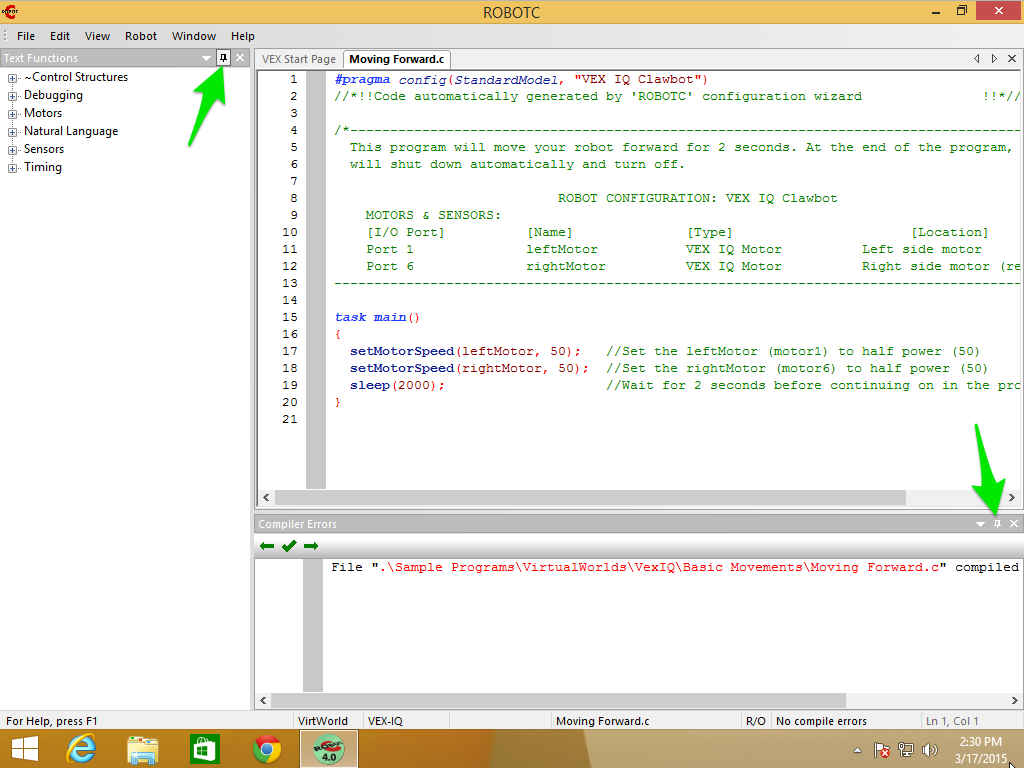
- #Robotc programming examples code
- #Robotc programming examples Bluetooth
- #Robotc programming examples download
Run the programs as per the instructions for the samples above, and observe the results on the NXT screen. These are essentially the same programs as above, except these will allow you to send through 3 values where the above programs would send only one value at the time. Checking for a message every half a second is NxtDisplayBigTextLine(2,"1: %d",my_message) Display the value as stored in the variable Let’s say something got through if the signal is not zero Let’s wait a bit and send something else Then move on to the slightly more useful programs below. If you do that, you can nicely repeat the procedure and wait for a message to come in. After storing this value in a variable for further usage, use ClearMessage() to set the values back to 0 (erase your email inbox). So, if you find something that is not 0, that’s the value that was sent by the other NXT. Using VEX IQ, VEX V5, or looking to program a virtual robot Checkout the VEXcode Offerings here. If there’s no message, you’ll find 0 as the message. ROBOTC is a cross-robotics-platform programming language for popular educational robotics systems. The only issue here is that this mailbox will hold only one email, so old messages are overwritten when new ones come in. You won’t miss it, it will be in the mail box. So, there’s no need to check every milisecond of the day. But like email, messages are stored for your review until you open them. You’ll never know you’ve got a new email unless you check. Think of it as emails you get from a friend. The key is that you have to keep looking for messages on the receiver part.
#Robotc programming examples code
I’ve added some comments to the code to help you understand what each portion of the code does. When you do this, the number 23 shows up on the receiving NXT.
#Robotc programming examples Bluetooth
I assume that your NXT’s are connected via Bluetooth (see “set up” section). The next examples (SenderSimple.c and ReceiverSimple.c) demonstrate the functionality to send one value from one NXT to another. In some occasions you want to send some basic numbers from one NXT to the other. The symbol in the top left of the screen indicates that your NXT’s are connected.Choose the NXT that you want to connect to.(Only the first time) Go to Bluetooth > Search.This is the source code for the on brick programming playback program on the NXT. This program illustrates use of the random() function.

Connect the NXT’s using the menu on the NXT brick: This program contains a function that emulates the capabilities of the MOVE block in the NXT-G graphical programming language.
#Robotc programming examples download
You can just copy paste the code from below, or download all 4 sample programs.

Newer versions may have issues with this code.

Bluetooth is a cool feature and it’s especially fun if you can make it work.


 0 kommentar(er)
0 kommentar(er)
